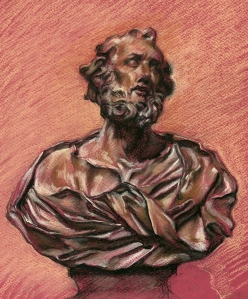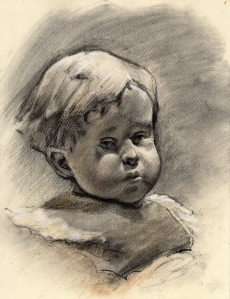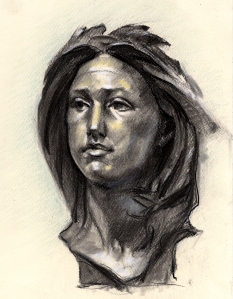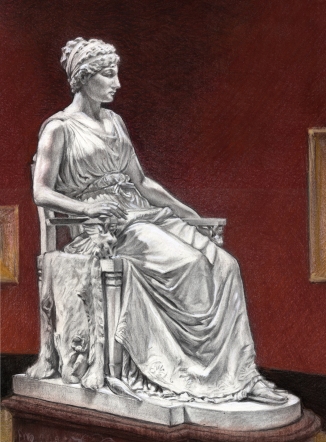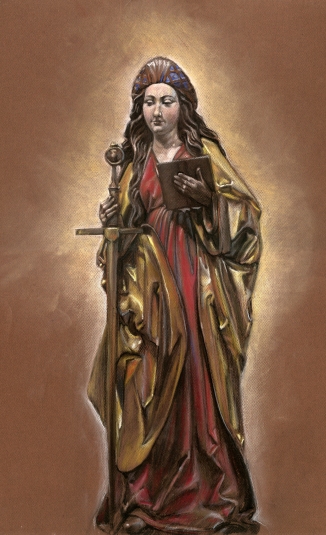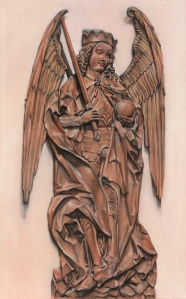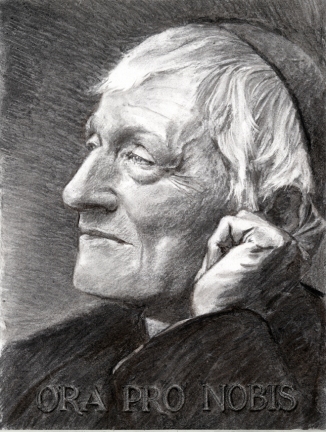This is a roundel by an anonymous Italian stone carver. It is permanently embedded into a Medieval display wall of the DIA, along with other roundels and pieces of carved stone from the Middle Ages.
What would you say was the age of this piece? The 11th, 12th, or 13th century perhaps?
It is late 1800’s to early 1900’s ! I worked for hours on this drawing before checking the date and was very surprised to see the carving might be only a little more than 100 years old. I don’t know if it was intentionally carved to appear centuries older, or the carver was an unwitting Medieval Master.

